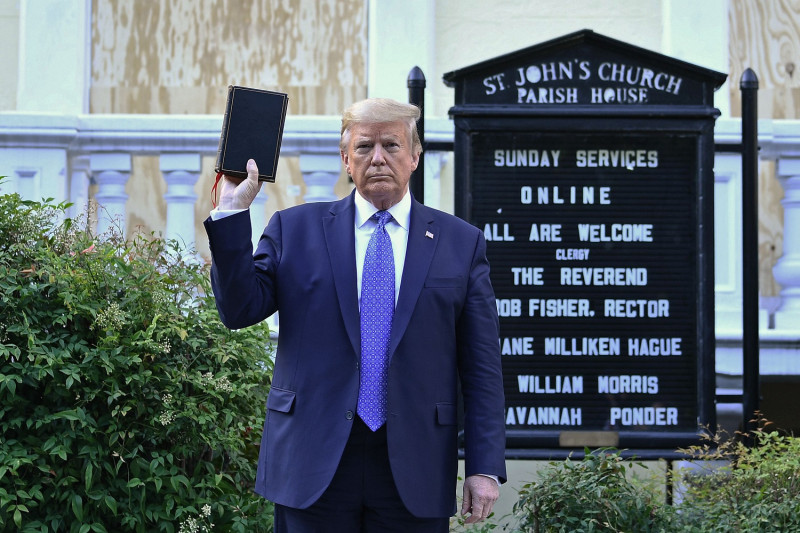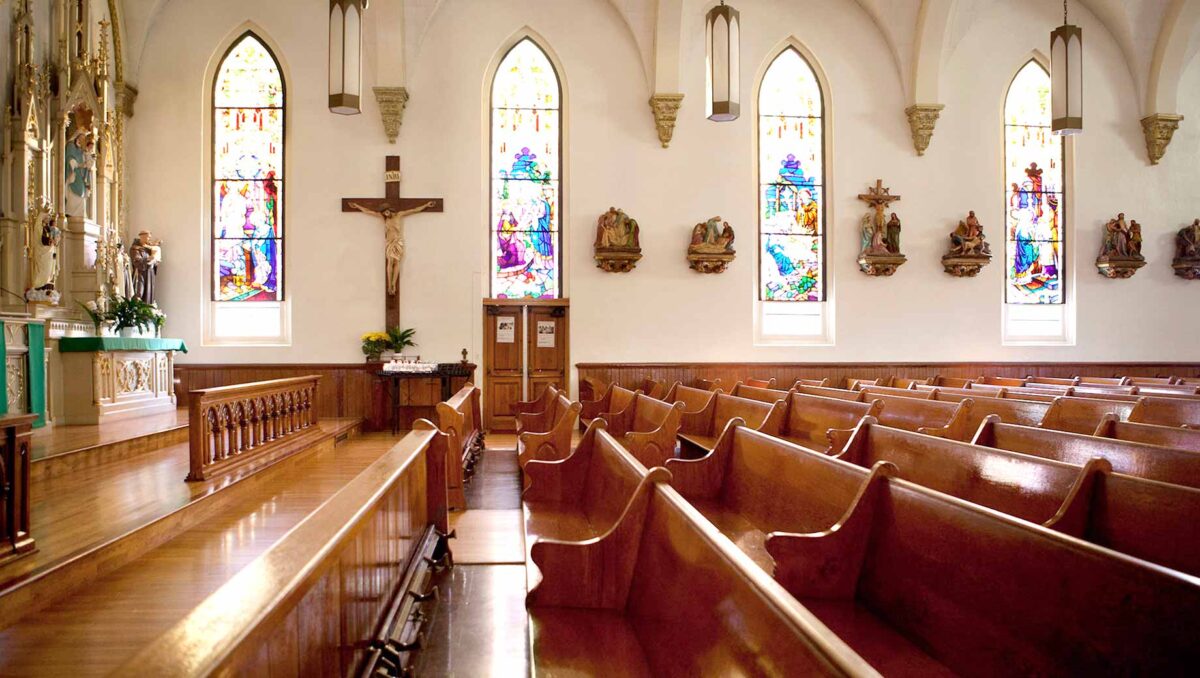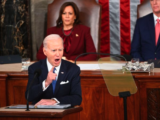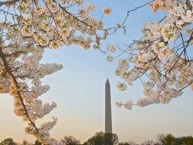The Big Picture -Â
By Glynn Wilson -Â
As the capitalist Easter Bunny works overtime to deliver massive amounts of sugary chocolate to stores across America in time for the weekend to celebrate the fertility of spring and the alleged death and resurrection of a prophet named Jesus, pollsters and pundits are wringing their hands over the drop in church affiliation in the United States to below 50 percent for the first time ever.
Membership in houses of worship continued a two decade decline last year, dropping below 50 percent for the first time in Gallup’s eight-decade trend line, according to a recent Gallup poll.
In 2020, at the height of the coronavirus pandemic when most churches were closed and during the final year of President Donald Trump’s reelection campaign that enjoyed widespread support from the Christian Right, only 47 percent of Americans said they belonged to a church, a synagogue or a mosque. That’s down from 50 percent in 2018 and 70 percent in 1999.
Church membership was reportedly 73 percent here when Gallup first asked the question in 1937 during the depths of the Great Depression, and remained near 70 percent for the next six decades, before a steady decline began around the turn of the 21st century, according to Gallup.
According to the Washington Post’s coverage of the poll, this is “a trend that analysts say could have major implications for politics, business and how Americans group themselves.” But the biased tone of the story seems to indicate this trend is somehow inevitably a bad thing.
It is also a fact that George Gallup had an abiding interest in the religiosity of Americans, being an avid Christian himself. So it’s no wonder that Gallup has more data on this over a longer period of time than anyone else.
Is it possible that the stay at home orders and church closures simply gave Americans the excuse they needed to buck the peer pressure to belong and finally abandon church memberships? Maybe because of the major drop in the economy people no longer had the extra cash to financially support an organized church that was closed?
Is it possible that massive amounts of press and media coverage of the Christian Right’s support of Trump — in spite of his moral bankruptcy — turned off mainstream Americans, moderates, independents, liberals, Democrats and young people and turned them away from supporting organized religion and churches, many of which have been engaged in an open political war against the separation of church and state for decades?

President Donald Trump holds up a Bible outside of St John’s Episcopal church across Lafayette Park in Washington, DC on June 1, 2020: AFP
As for Catholics, could it be that story after story about pedophile priests sexually abusing children might cause people to abandon their support for that church?
Is it possible that the long-term trend away from churches left over from the time of monarchy could be good for America and for science, society and democracy?
The Post quotes Tara Isabella Burton, author of Strange Rites: New Religions for a Godless World, which attributes the national decline in religious affiliation to two major trends among younger Americans: broader shifts suggesting a larger distrust by the young of institutions, including police and pharmaceutical companies as well as the government and churches. Some Americans are disillusioned by the behavior of religious leaders, she says, because of the sexual abuse scandals in the Roman Catholic Church and the strong white evangelical alignment with Trump.
Mark Hainds, a scientist and author who abandoned his own Catholic beliefs after leaving a teaching and research job at Auburn University and while walking the entire border between the U.S. and Mexico to write a book about it, expressed some strong thoughts on the subject Tuesday in a Facebook Messenger interview.
Related: Alabama Scientist Mark Hainds Publishes Book as First to Hike Mexican Border (The Washington Post wrongly reported that someone else was the first to walk the entire border and write a book about it).
“I was a multi-generational Mass attending Catholic until 2016, when the majority of my congregation voted to deport families in the pews beside and behind them,” Hainds said. “I said ‘No more!’
“I saw evil personified in Trump, and I decided that America’s version of Christianity was a force for evil, entirely unworthy of financial support, church attendance or membership,” he said.
“I sincerely believe that America’s churches are divisive, power hungry institutions, driving our nation towards conflict,” he continued. “During WWII, many European churches sided with fascists and despots, paying dearly post-conflict with declining influence and relevance. We’re witnessing the same outcome in America, where churches aligned with Trump in their pursuit of power over decency.”
Given the nearly perfect alignment between not having a religious preference and not belonging to a church, the 13-percentage-point increase in no affiliation since 1998-2000 appears to account for more than half of the 20-point decline in church membership over time, Gallup concludes.
“Most of the rest of the drop can be attributed to a decline in formal church membership among Americans who do have a religious preference. Between 1998 and 2000, an average of 73 percent of religious Americans belonged to a church, synagogue or mosque,” Gallup says. “Over the past three years, the average has fallen to 60 percent.”
Church membership is strongly correlated with age, Gallup shows, as 66 percent of traditionalists — U.S. adults born before 1946 — belong to a church, compared with 58 percent of baby boomers, 50 percent of those in Generation X and 36 percent of millennials. The limited data Gallup has on church membership among the portion of Generation Z that has reached adulthood are so far showing church membership rates similar to those for millennials.
“The decline in church membership, then, appears largely tied to population change, with those in older generations who were likely to be church members being replaced in the U.S. adult population with people in younger generations who are less likely to belong. The change has become increasingly apparent in recent decades because millennials and Gen Z are further apart from traditionalists in their church membership rates (about 30 points lower) than baby boomers and Generation X are (eight and 16 points, respectively),” Gallup says. “Also, each year the younger generations are making up an increasingly larger part of the entire U.S. adult population.”
* Among religious groups, the decline in membership is steeper among Catholics, down 18 points from 76 percent to 58 percent, than Protestants, down nine points from 73 percent to 64 percent.
* Declines in church membership are proportionately smaller among political conservatives, Republicans and married adults, Gallup says. These groups tend to have among the highest rates of church membership, along with residents of the South and African-Americans.
* Over the past two decades, declines in church membership have been greater among residents in the Eastern U.S. and Democrats, yet political independents have lower rates of church membership than Democrats, which has implications for elections since most elections are decided by independents.
* Church membership among Hispanic Americans in 2018-2020 was 37 percent, among the lowest for any major subgroup.
Gallup’s Implications
“The U.S. remains a religious nation, with more than seven in 10 affiliating with some type of organized religion,” Gallup claims. “However, far fewer, now less than half, have a formal membership with a specific house of worship. While it is possible that part of the decline seen in 2020 was temporary and related to the coronavirus pandemic, continued decline in future decades seems inevitable, given the much lower levels of religiosity and church membership among younger … adults.”
While precise numbers of church closures are elusive, Gallup says, a conservative estimate is that thousands of churches are closing each year in the U.S., the implication being that this is a bad thing. Could it be that this would just make more room for bars, for example?
In 2017, Gallup found churchgoers citing sermons as the primary reason they attended church. Majorities also said programs geared toward children and teenagers, community outreach and volunteer opportunities, and dynamic leaders were also factors in their attendance, thus accounting for the growth in suburban mega churches unaffiliated with specific denominations.
It’s true that many people who don’t identify with a particular religious institution still say they believe in a god, pray or do things that tend to be associated with faith or spirituality, like communing with nature or meditation.
Political Belief Supplants Religion?
Shadi Hamid, a senior fellow at the Brookings Institution, argued in a recent essay for the Atlantic that what was once religious belief has been replaced by political belief.
On the political right, conservative Christians focused on Trump as a political “savior,” he said, rather than focusing on their traditional questions of morality.
Related: The End of the World As We Know It: Is Donald Trump the Antichrist?
Christians in the Republican Party, Hamid said, are being less defined by their faith than by a set of narrow political concerns, what Alabama historian Wayne Flynt called “wedge issues” in an interview with me a few years ago.
Related: On Baptists and the Separation of Church and State
Why Do Working Class People Vote Against Their Economic Interests?
“… if secularists hoped that declining religiosity would make for more rational politics, drained of faith’s inflaming passions, they are likely disappointed,” Hamid writes. “As Christianity’s hold, in particular, has weakened, ideological intensity and fragmentation have risen. American faith, it turns out, is as fervent as ever; it’s just that what was once religious belief has now been channeled into political belief. Political debates over what America is supposed to mean have taken on the character of theological disputations. This is what religion without religion looks like.”
But the fact remains that much of this fervor was the product of a massive, exploitive political propaganda campaign drummed up by the Trump cabal to gain and hold power for the Republican Party. There is not that much evidence indicating this was some kind of a homegrown grassroots movement simply led by the Proud Boys, the Oath Keepers, the Boogaloo Bois or the One Percenters, the far-right militia groups being blamed for the Capitol insurrection.
Those groups were considered as fringe as the Ku Klux Klan — until Trump came along and empowered them from inside the White House.
Over the long-term, as the fervor for Trump dies down, it might be possible for a the arc of the moral universe to bend back towards justice, with vigilance.
Bending the Arc of the Moral Universe Towards Justice Takes Vigilance
The education of Americans will be critical in this. The declining college enrollment levels due to COVID is worrisome, as well as the takeover of some local education systems by religious texts. Text books have in many cases been stripped of quality story telling for simple rote learning, and the separation of church and state has been obliterated in many cases from the narrative. This was considered of paramount importance by the founders of American democracy.
Unless we get overwhelmingly honest reporting on these issues by the press and media in this country — instead of this pandering to religious people for profit in newspapers and on television — the religious partisan divide could continue to tear us apart and spell the end of American democracy.
It’s also not good for the planet. Counting on a savior from outer space to save us from our selfishness is about as damaging a point of view as thinking we can all move to another planet when this one is environmentally spent.
Before you continue, I’d like to ask if you could support our independent journalism as we head into one of the most critical news periods of our time in 2024.
The New American Journal is deeply dedicated to uncovering the escalating threats to our democracy and holding those in power accountable. With a turbulent presidential race and the possibility of an even more extreme Trump presidency on the horizon, the need for independent, credible journalism that emphasizes the importance of the upcoming election for our nation and planet has never been greater.
However, a small group of billionaire owners control a significant portion of the information that reaches the public. We are different. We don’t have a billionaire owner or shareholders. Our journalism is created to serve the public interest, not to generate profit. Unlike much of the U.S. media, which often falls into the trap of false equivalence in the name of neutrality, we strive to highlight the lies of powerful individuals and institutions, showing how misinformation and demagoguery can harm democracy.
Our journalists provide context, investigate, and bring to light the critical stories of our time, from election integrity threats to the worsening climate crisis and complex international conflicts. As a news organization with a strong voice, we offer a unique, outsider perspective that is often missing in American media.
Thanks to our unique reader-supported model, you can access the New American journal without encountering a paywall. This is possible because of readers like you. Your support keeps us independent, free from external influences, and accessible to everyone, regardless of their ability to pay for news.
Please help if you can.
American journalists need your help more than ever as forces amass against the free press and democracy itself. We must not let the crypto-fascists and the AI bots take over.
See the latest GoFundMe campaign here or click on this image.
Don't forget to listen to the new song and video.
Just because we are not featured on cable TV news talk shows, or TikTok videos, does not mean we are not getting out there in search engines and social media sites. We consistently get over a million hits a month.
Click to Advertise Here


















Big Shocker! Lets see-utilizing The Bible and Jesus to kill the ERA; stem cell research; a woman’s right to chose; equal pay; deny climate change; support an adulterous fascist; continue to use church funds to pay off sex scandals. I wonder WHAT could be the problem?
As soon as I figure out how to copy a link for this article, I am going to share to some big groups I am a member of.